Common Orthodontic Issues
Crowding of the teeth
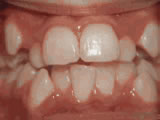 Before
Before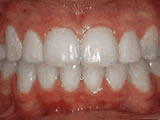 After
AfterCrowded teeth occur when there does not seem to be enough room in the jaw for your teeth. Some teeth will push either forward or back to make room. This can make it hard to clean some teeth, resulting in decay on their obsured surfaces. It can also cause some teeth to experience more wear than others.
Open bite - Front teeth don't touch
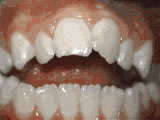 Before
Before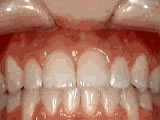 After
AfterAn open bite occurs when back opposing teeth meet, but upper and lower opposing front (anterior) teeth do not meet, creating an abnormal gap. Leading causes are "tongue thrusting" (also called infantile swallowing pattern) and prolonged thumb sucking. All babies thrust their tongue forward when swallowing to provide a seal with the lips. The transition to normal (adult) swallowing typically occurs by age 4 when most of the primary teeth are emerging. If the tongue does not move out of the way by that time, it can block full eruption of the front teeth. A thumb constantly resting between teeth can have a similar effect. Pediatric dentists generally recommend thumb sucking cease by about age 4.
Deep overbite - Lower front teeth bite into palate
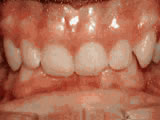 Before
Before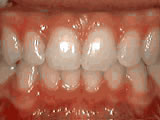 After
AfterOverbite (deep bite) is characterized by upper front teeth that bite too far down over the lower teeth, sometimes covering the lower teeth completely and forcing the lower teeth to bite into the roof of the mouth (palate). This is often a result of a jaw size discrepancy that doesn't allow the lower teeth to hit the opposing upper front teeth, resulting in continued eruption of the teeth and growth of the jawbone that support the teeth. This can lead to tissue irriation and damage to the palate from the lower teeth hitting the soft gum tissue instead of other teeth.
Underbite - Lower front teeth in front of upper teeth
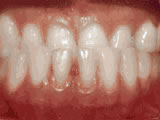 Before
Before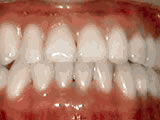 After
AfterUnderbite occurs when lower front teeth protrude past the top front teeth, as if often seen with bulldogs. It's usually caused by undergrowth of the upper jaw, overgrowth of the lower jaw, or both. In mild cases, conventional orthodontic treatment can correct the problem; in more severe cases, surgical orthodontics may be necessary.
Spacing of teeth
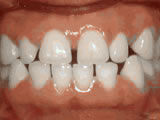 Before
Before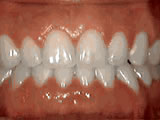 After
AfterExcessive spacing, or irregular gaps between teeth, can occur due to genetics. For example, receiving Dad's genetic coding for jaw size, but Mom's tooth size. Likewise, congentially missing teeth (permanent teeth that never grow in) can be an inherited trait. Teeth also can be lost from disease. Whatever the cause, excessive spacing allows the surrounding teeth to shift out of alignment since there is no longer anything to help stablize their position.
Overjet - Protruding front teeth
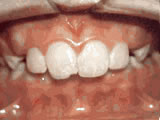 Before
Before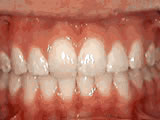 After
AfterOverjet (protrusion) involves upper front teeth that extend too far forward or lower teeth that do not extend forward enough. This may be due to an imbalance in the development of the upper and lower jaws, missing lower teeth and/or improper alignment of molars and can be exacerbated by thumb sucking or tongue thrusting.
Crossbite
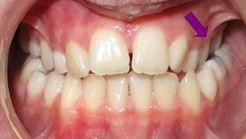 Before
Before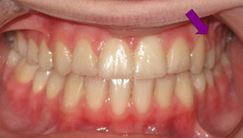 After
AfterCrossbite is a form of malocclusion where teeth are positioned either closer to the cheek or to the tongue than their corresponding antagonist teeth in the upper or lower dental arch.
